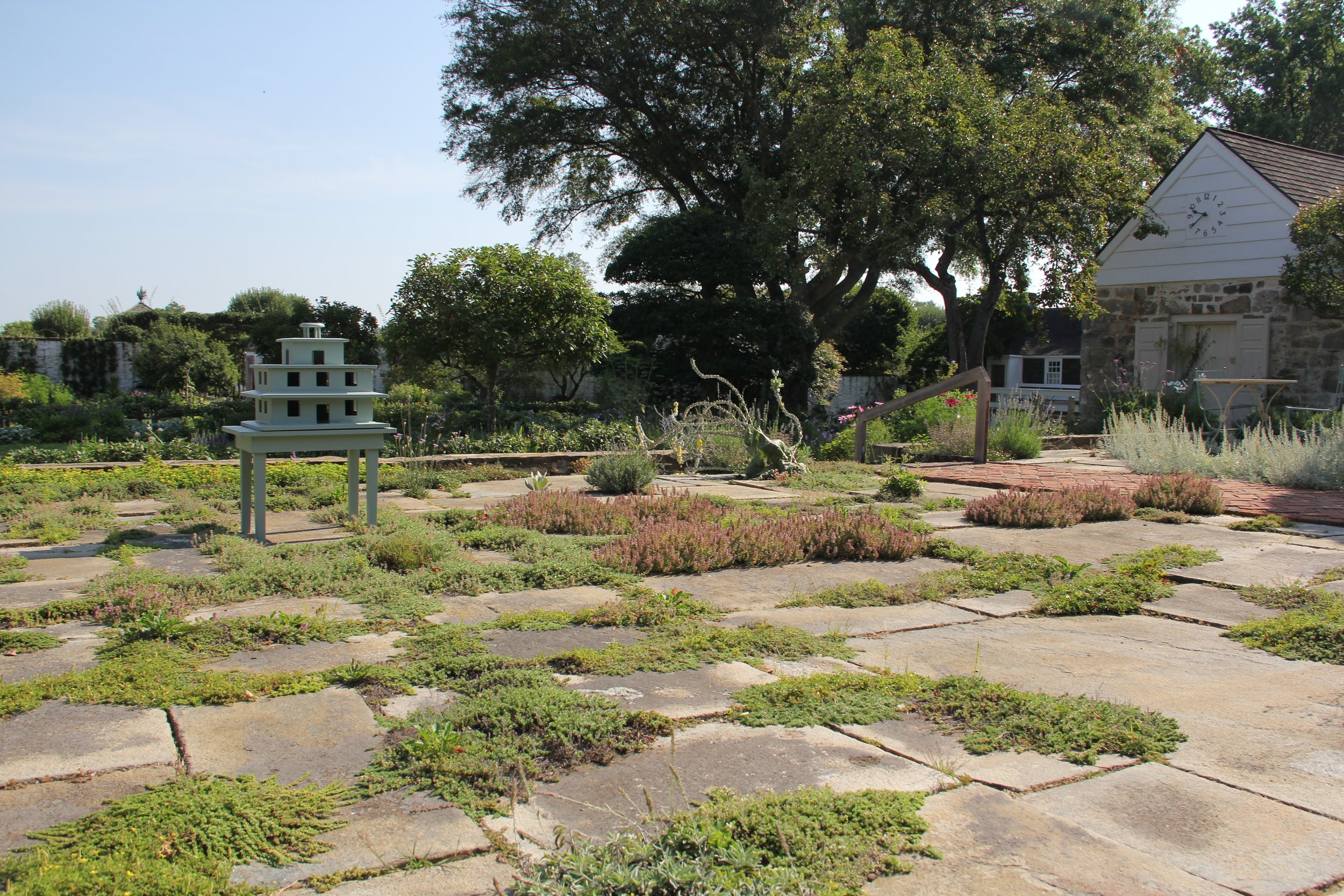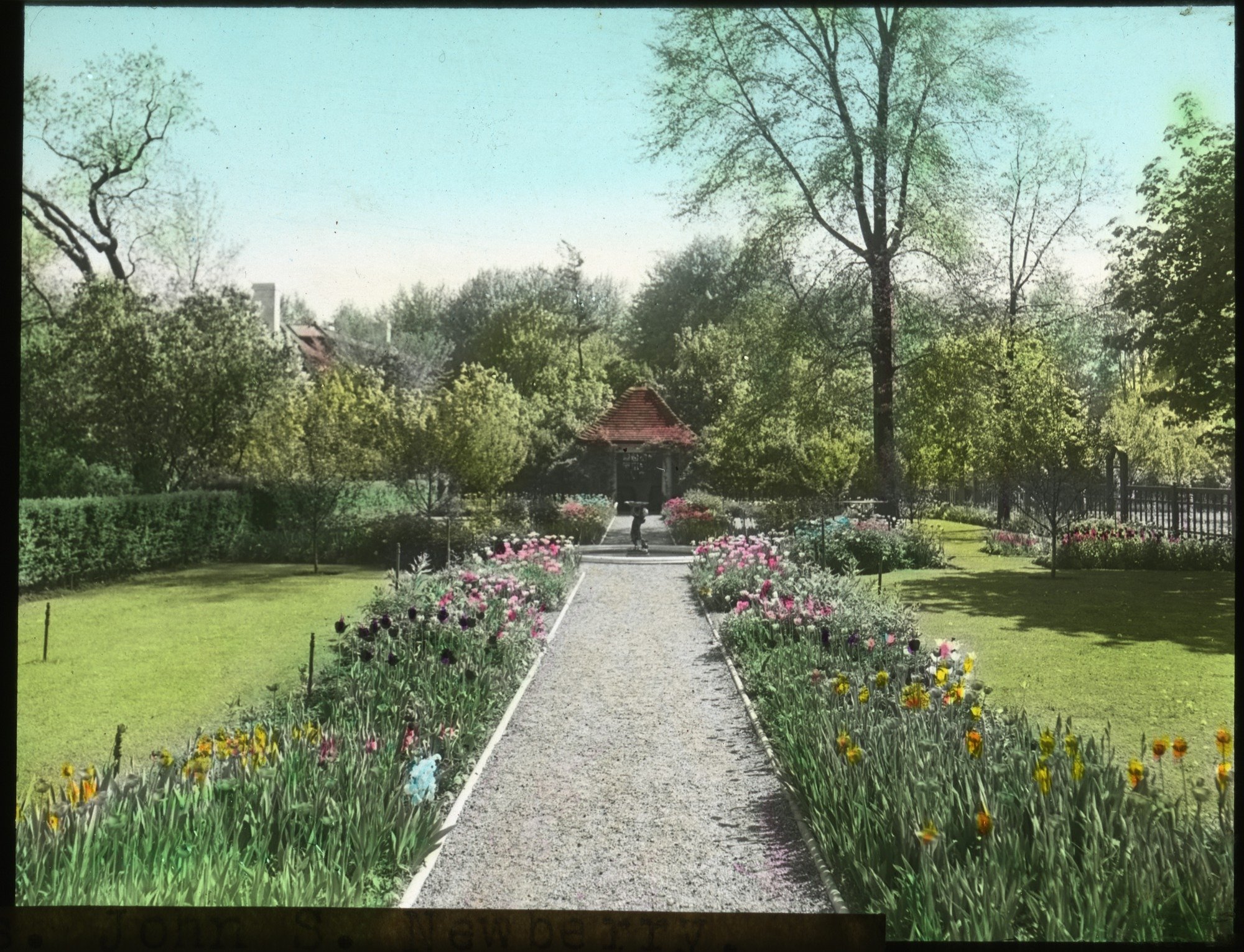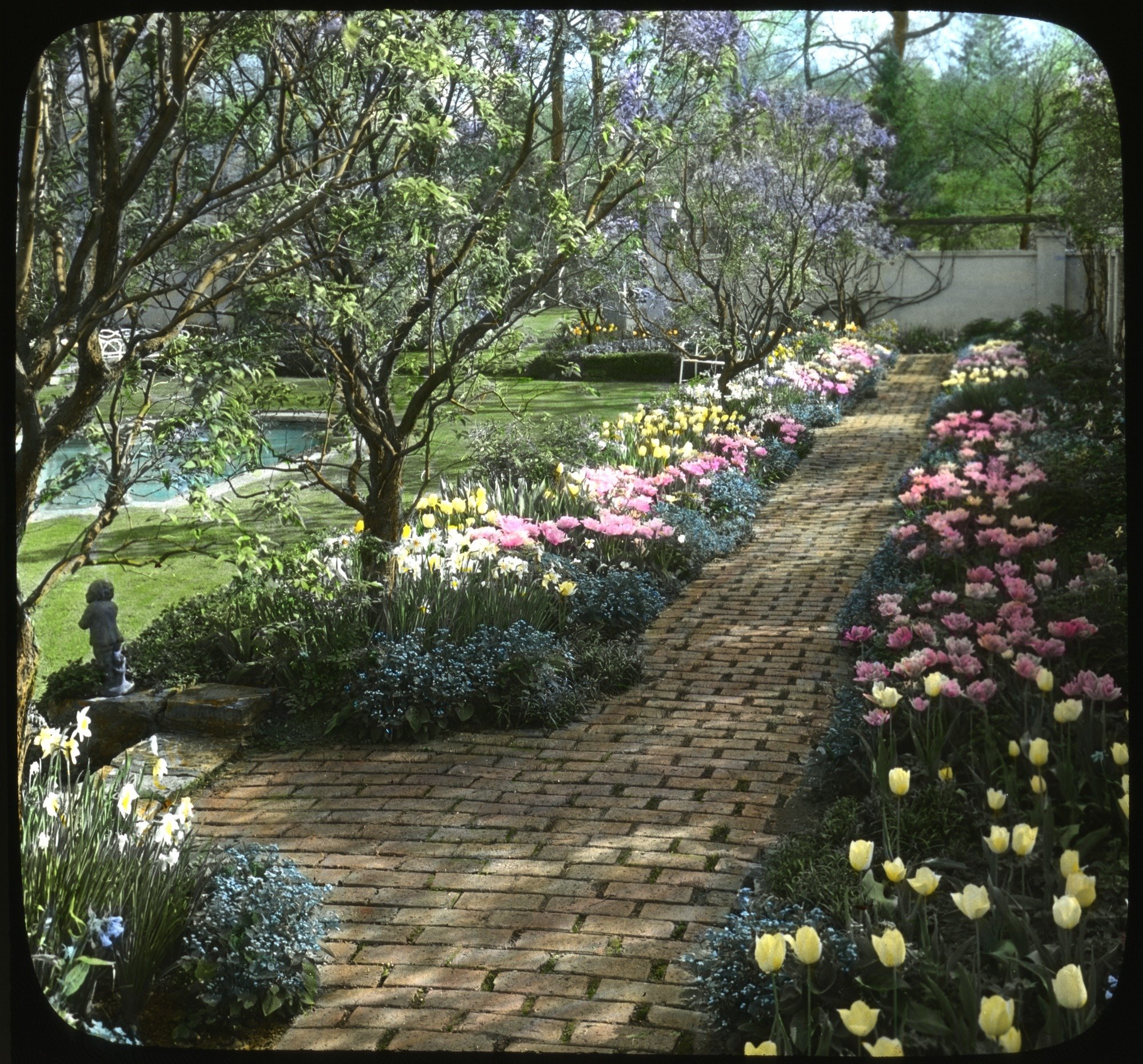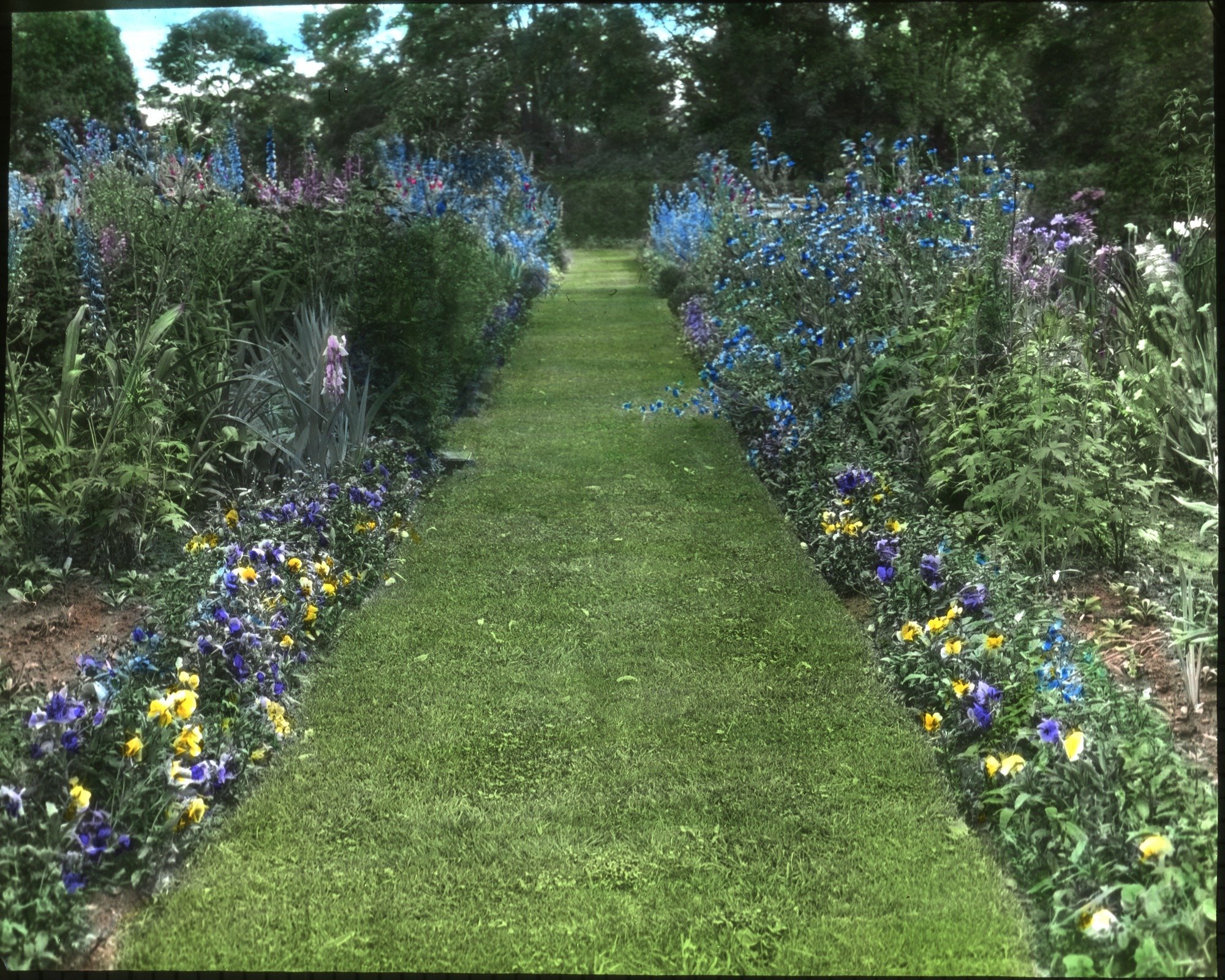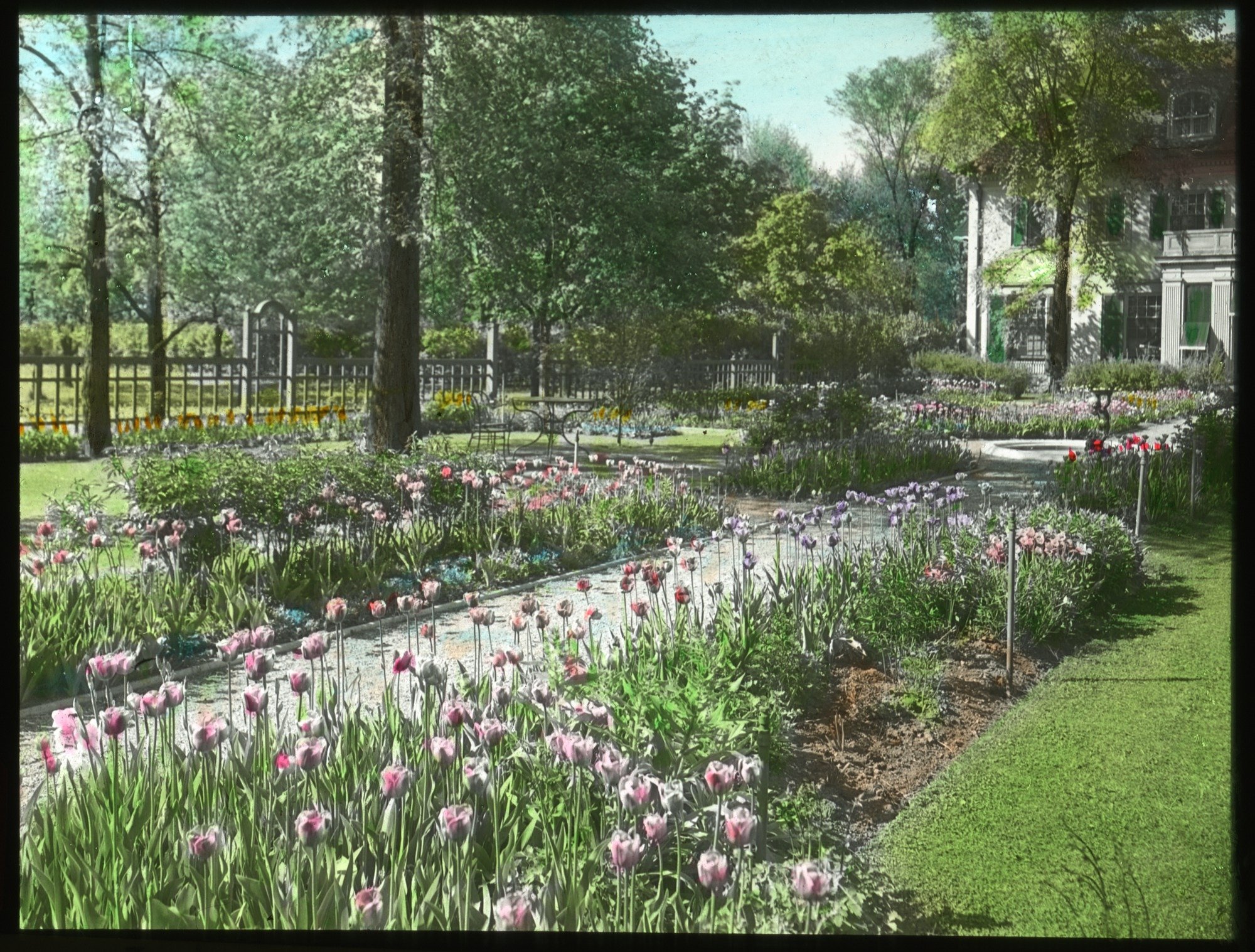Ellen Biddle Shipman: A Style All Her Own
OSGF
The gardens Bunny Mellon created during her life were influenced by a number of places, objects, people and literature. One woman who had a lasting impact on American gardens and served as an inspiration for Mrs. Mellon was Ellen Biddle Shipman. Ellen, born on this day in 1869, was a pioneering landscape architect who designed over 600 gardens in her lifetime. Read on to learn about Ellen’s life and how some of her trademark garden design staples made their way to the gardens of Mrs. Mellon.
Ellen Biddle Shipman (1869-1950) was born on November 5th in Philadelphia. Her childhood was dominated by transience thanks to her father’s career in the military. Outposts in Arizona, Colorado and Nevada kept Ellen and her family out west for some of the early formative years. Later she was relocated to New Jersey which offered a stark contrast between the conifer dominated, arid landscape of the southwest. Throughout this period on the East Coast, Ellen spent time visiting her grandmother who she credits with instilling her with a love of gardening.
After two more moves to Baltimore and then Washington DC, Ellen began living in Cambridge, Massachusetts in the early 1890s. It was here that she would meet Louis Evan Shipman, who she later married. The two settled in Cornish, New Hampshire, an area which was slowly becoming a retreat for artists and other creative types. Living in this artist community introduced Ellen to a number of actors, writers, and one figure who would become her mentor and collaborator, Charles A. Platt. It also served as a period of early horticulture practice and exposure to the heritage flower gardens of her neighbors like Stephen Parrish.
These factors were the driving motivation in establishing her first garden, Brook Place. The newly purchased eighteenth century homestead became the center of Ellen’s focus while working at the firm of landscape painter and architect Charles Platt. Mentorships such as this were the only route of formal education Ellen received as opportunities for women to attend training programs in garden design were slim or largely only available in Europe. Responsibilities of being a mother of three combined with restricted finances also put her at a disadvantage from her peers who could pursue their careers more freely. Despite all of this, Ellen decided to pursue the field of landscape architecture and open her own practice around 1910.
The gardens of Longue Vue taken circa 1937.
Throughout Ellen’s illustrious career she designed over 600 gardens with a clientele spanning a staggering amount of states including: Illinois, New York, Kentucky, Florida, Maine, Washington, North Carolina, South Carolina, Connecticut, Colorado, Texas, Delaware, Michigan, New Jersey, Massachusetts, and New Hampshire. Most were commissions from private land and homeowners though there were exceptions that can be visited today in New Orleans, Durham, New York City, and Washington DC which is just a little over a mile away from the former city residence of Mr. and Mrs. Mellon.
Photo of a perennial border designed by Ellen. From Cornell University Library.
Ellen was once described by House & Garden as “one of the best, if not the very best Flower Garden Maker in America.” Her design style, while influenced by her work with Platt, was distinctively hers. The most notable features of Ellen’s design approach was a blending of both house and garden and the creation of garden “rooms.” The product of this meant laying out garden beds and matching proportions with the scale of the home. Another staple was the incorporation of lush foliage and mixed textures in planted borders.
“Gardening opens a wider door than any other of the arts– all mankind can walk through, rich or poor, high or low, talented and untalented. It has no distinctions, all are welcome.”
Among the many figures whose work inspired Mrs. Mellon's own pursuits in garden design, Ellen Biddle Shipman's influence shines through. According to Oak Spring staff who knew her well, Bunny valued Ellen’s work highly and was deeply inspired by the gardens she created during her lifetime. This can be seen in the features of Bunny’s gardens today through her use of pruned evergreen borders, axial lines, and espaliered fruit trees.
Glass lantern slides of Ellen’s gardens show her lush planting style. Taken from the Smithsonian’s Archives of American Gardens.
Information about Ellen’s life was initially difficult to piece together. Upon her passing her correspondence and personal papers were destroyed per her request. Thankfully, her professional documents and designs were saved and archived at Cornell University. This reconstruction also shed light on the impact of Ellen’s legacy, which spans beyond the immediate realm of gardens. After opening her own firm, she moved the practice to New York City. During the height of her career, the firm was one of the most successful in New York at that time. As her practice expanded she employed several female landscape architects. One was Elizabeth Lord, another was Edith Schryver. The two notable former employees later opened a joint firm in Oregon which was the very first firm of female landscape architects on the West Coast and still operates today.
References:
“History of the Tregaron Estate.” Tregaron Conservancy, 2 Mar. 2021, tregaron.org/history/.
“Longue Vue House and Gardens, New Orleans, La., Featured in The Gardens of Ellen Biddle Shipman.” View, no. 1, 2001, pp. 4–4. JSTOR, http://www.jstor.org/stable/24707881.
Karson, Robin. Genius for Place: American Landscapes of the Country Place Era. Library of American Landscape History, 2013.
Schenker, Heath. Landscape Journal, vol. 16, no. 2, 1997, pp. 200–02. JSTOR, http://www.jstor.org/stable/43323443.
Tankard, Judith B. Ellen Shipman and the American Garden. University of Georgia Press, 2018.



